Seismic Performance of H-Shaped Steel Column with Replaceable Slip Friction Joints
Abstract
:1. Introduction
2. Construction and Working Principle
3. Overview of Experiment
3.1. Specimen Specification
3.2. Material Property Tests
3.3. Test Set-Up
3.4. Loading Solutions
3.5. Strain Gauge and Displacement Metre Arrangement
4. Test Results and Analysis
4.1. Deformation Modes
4.2. Hysteresis Curves
4.3. Skeleton Curves
4.4. Stiffness Degradation
4.5. Energy Consumption Performance
4.6. Strain Analysis
5. Finite Element Analysis
5.1. Collapse Mode Comparison of Specimens C-2 and C-3
5.2. Comparison of the Hysteresis Curves
5.3. Comparison of the Axial Shortening
5.4. Comparison of the Strain of the Specimen C-3
5.5. Parametric Analysis
5.5.1. Hysteresis Performance and Energy Consumption
5.5.2. The Calculated Axial Shortening
5.5.3. The Calculated Strain Analysis
6. Conclusions
- (1)
- When the standard H-shaped column was subjected to horizontal loading, severe buckling deformation occurred at the top and base of the column. Slight buckling deformation of the base flange was observed in the H-shaped steel column with a replaceable slipping friction joint at the column base. For the H-shaped column with replaceable slip friction joints at both ends, damage was concentrated on the vertical of the internal and external connectors near the base plate, while the steel column remained elastic.
- (2)
- In comparison to the stable load bearing capacity of the H-shaped steel column with a replaceable slipping friction joint, significant degradation of the load bearing capacity of the standard H-shaped column was marked.
- (3)
- It was found that the H-shaped column with replaceable slip friction joints at both ends consumed less energy than the standard H-shaped column. However, this energy loss can be offset by additional energy-consuming elements.
- (4)
- The slip friction joints at the ends of the column can effectively reduce the axial shortening of the steel column and enhance the seismic stability of the structure.
- (5)
- The finite element analysis was conducted on H-shaped columns with replaceable slip friction joints by taking into account the thickness of the connector horizontal limbs. The results showed that the thickness of the connector horizontal limbs is suggested to be less than twice the thickness of the connector vertical limbs; in this case, the connector improved the load-bearing capacity of the steel column and ensured the frictional energy dissipation of the joints. Additionally, it protected the main structure from damage and achieved the goal damage control. The frictional energy consumption of the models reached 85–90% of the total energy consumption, indicating that the energy is mainly consumed by friction at the members of the slip friction joints with replaceable connectors.
7. Outlook
Author Contributions
Funding
Data Availability Statement
Conflicts of Interest
References
- Thai, H.-T.; Ngo, T.; Uy, B. A review on modular construction for high-rise buildings. Structures 2020, 28, 1265–1290. [Google Scholar] [CrossRef]
- Wang, H.; Zhao, X.; Ma, G. Experimental study on seismic performance of column-column-beam joint in panelised steel-modular structure. J. Constr. Steel Res. 2022, 192, 107240. [Google Scholar] [CrossRef]
- Deng, E.-F.; Zong, L.; Ding, Y.; Zhang, Z.; Zhang, J.-F.; Shi, F.-W.; Cai, L.-M.; Gao, S.-C. Seismic performance of mid-to-high rise modular steel construction—A critical review. Thin-Walled Struct. 2020, 155, 106924. [Google Scholar] [CrossRef]
- Yao, Z.; Wang, W.; Fang, C.; Zhang, Z. An experimental study on eccentrically braced beam-through steel frames with replaceable shear links. Eng. Struct. 2020, 206, 110185. [Google Scholar] [CrossRef]
- Du, H.; Zhao, P.; Wang, Y.; Sun, W. Seismic experimental assessment of beam-through beam-column connections for modular prefabricated steel moment frames. J. Constr. Steel Res. 2022, 192, 107208. [Google Scholar] [CrossRef]
- Chen, Y.; Wang, W.; Chen, Y. Full-scale shake table tests of the tension-only concentrically braced steel beam-through frame. J. Constr. Steel Res. 2018, 148, 611–626. [Google Scholar] [CrossRef]
- Zaghi, A.E.; Soroushian, S.; Itani, A.; Maragakis, E.M.; Pekcan, G.; Mehrraoufi, M. Impact of column-to-beam strength ratio on the seismic response of steel MRFs. Bull. Earthq. Eng. 2015, 13, 635–652. [Google Scholar] [CrossRef]
- MacRae, G.A. The continuous column concept-development and use. In Proceedings of the Ninth Pacific Conference on Earthquake Engineering Building an Earthquake-Resilient Society, Auckland, New Zealand, 14–16 April 2011; pp. 14–16. [Google Scholar]
- Li, Y.W.; Wang, Y.Z.; Wang, Y.B. Experimental and numerical study of beam-through energy-dissipative rocking columns for mitigating seismic responses. J. Constr. Steel. Res. 2022, 189, 107097. [Google Scholar] [CrossRef]
- Qu, Z.; Gong, T.; Wang, X.; Li, Q.; Wang, T. Stiffness and strength demands for pin-supported walls in reinforced-concrete moment frames. J. Constr. Steel. Res. 2020, 9, 146. [Google Scholar] [CrossRef]
- Macrae, G.A.; Urmson, C.R.; Walpole, W.R.; Moss, P.; Hyde, K.; Clifton, G.C. Axial shortening of steel columns in buildings subjected to earthquakes. Bull. N. Z. Soc. Earthq. Eng. 2009, 42, 275–287. [Google Scholar] [CrossRef]
- Ibarra, L.F.; Medina, R.A.; Krawinkler, H. Hysteretic models that incorporate strength and stiffness deterioration. Earthq. Eng. Struct. Dyn. 2005, 34, 1489–1511. [Google Scholar] [CrossRef]
- Lignos, D.G.; Hikino, T.; Matsuoka, Y.; Nakashima, M. Collapse assessment of steel moment frames based on e-defense full-scale shake table collapse tests. J. Struct. Eng. 2013, 139, 120–132. [Google Scholar] [CrossRef]
- Lin, X.; Li, H.; He, L.; Zhang, L. Experimental study on seismic behavior of the damage-control steel plate fuses for beam-to-column connection. Eng. Struct. 2022, 270, 114862. [Google Scholar] [CrossRef]
- Lin, X.; Chen, Y.; Yan, J.-B.; Hu, Y. Seismic behavior of welded beam-to-column joints of high-strength steel-moment frame with replaceable damage-control fuses. J. Struct. Eng. 2020, 146, 04020143. [Google Scholar] [CrossRef]
- Zhang, A.-L.; Chen, X.; Jiang, Z.-Q.; Kang, Y.-T.; Yang, X.-F. Experiment on seismic behavior of earthquake-resilience prefabricated cross hinge column foot joint. J. Constr. Steel Res. 2022, 189, 107056. [Google Scholar] [CrossRef]
- Liu, X.C.; Cui, F.Y.; Zhan, X.X.; Yu, C.; Jiang, Z.Q. Seismic performance of bolted connection of H-beam to HSS-column with web end-plate. J. Constr. Steel Res. 2019, 156, 167–181. [Google Scholar] [CrossRef]
- Liu, X.; Yang, Z.; Wang, H.; Zhang, A.; Pu, S.; Chai, S.; Wu, L. Seismic performance of H-section beam to HSS column connection in prefabricated structures. J. Constr. Steel Res. 2017, 138, 1–16. [Google Scholar] [CrossRef]
- Zhang, R.; Xie, J.-Y.; Chouery, K.E.; Liu, J.; Jia, L.-J.; Xiang, P.; Zhao, X.; Macrae, G.A.; Clifton, G.C.; Dhakal, R.P.; et al. Strong axis low-damage performance of rocking column-base joints with asymmetric friction connections. J. Constr. Steel Res. 2022, 191, 107175. [Google Scholar] [CrossRef]
- Freddi, F.; Dimopoulos, C.A.; Karavasilis, T.L. Experimental evaluation of a rocking damage-free steel column base with friction devices. J. Struct. Eng. 2020, 146, 04020217. [Google Scholar] [CrossRef]
- Chung, Y.L.; Du, L.J.; Pan, H.H. Performance evaluation of a rocking steel column base equipped with asymmetrical resistance friction damper. Earthq. Struct. 2019, 17, 49–61. [Google Scholar] [CrossRef]
- GB/T 228.1-2021; Metallic Materials—Tensile Testing—Part 1: Method of Test at Room Temperature. National Standard of the People’s Republic of China: Beijing, China, 2021. (In Chinese)
- ANSI/AISC 341-16; Seismic Provisions for Structural Steel Buildings. American Institute of Steel Construction Inc.: Chicago, IL, USA, 2016.
- Borzouie, J.; MacRae, G.A.; Chase, J.G.; Rodgers, G.W.; Clifton, G.C. Experimental studies on cyclic performance of column base strong axis–aligned asymmetric friction connections. J. Struct. Eng. 2016, 142, 04015078. [Google Scholar] [CrossRef]
- Elettore, E.; Freddi, F.; Latour, M.; Rizzano, G. Design and analysis of a seismic resilient steel moment resisting frame equipped with damage-free self-centering column bases. J. Constr. Steel Res. 2021, 179, 106543. [Google Scholar] [CrossRef]
- Kim, E.C.; Fan, K.; Jia, L.J. State-of-the-art review of symmetric and asymmetric friction connections: Seismic behavior and design methods. Eng. Mech. 2021, 38, 22–37. (In Chinese) [Google Scholar] [CrossRef]
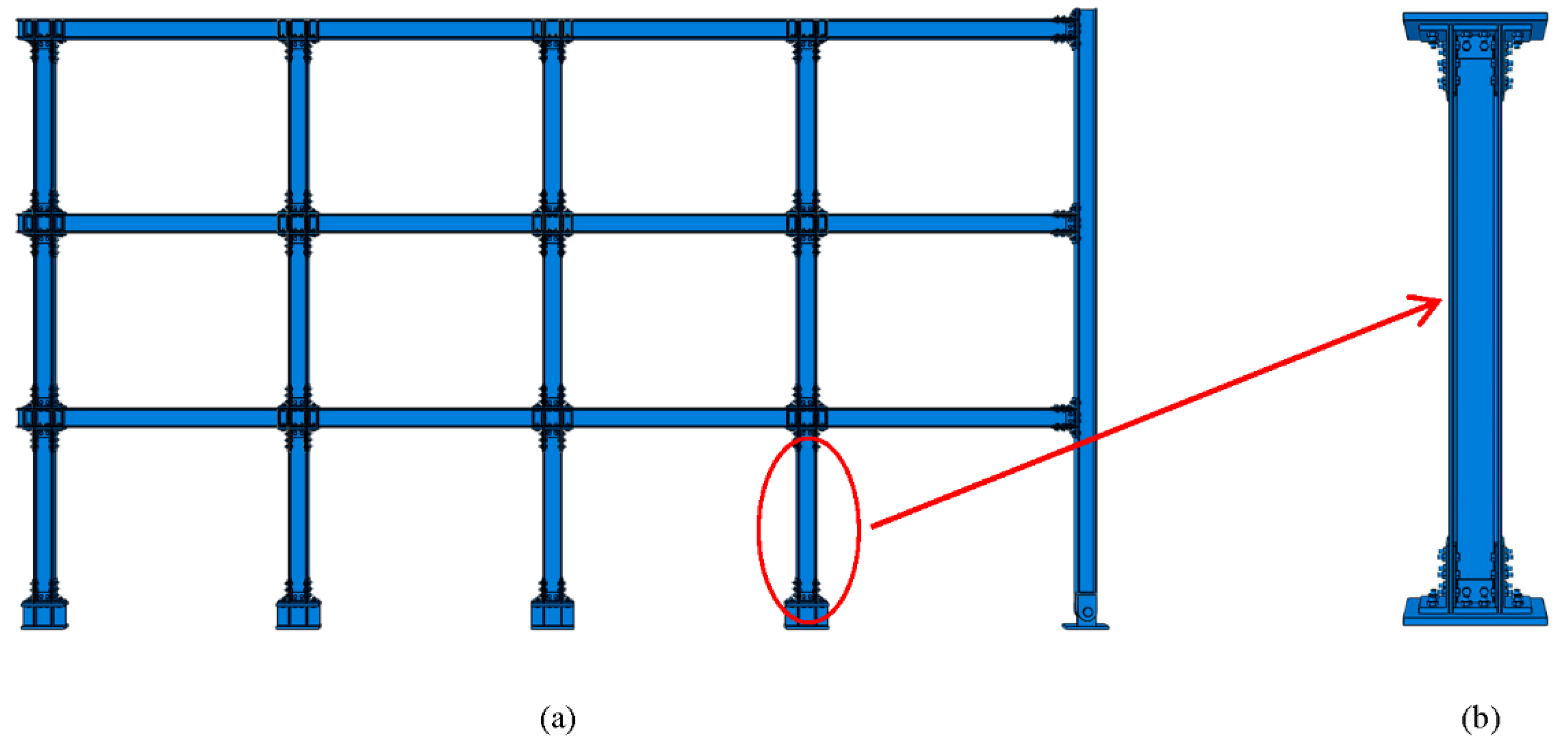

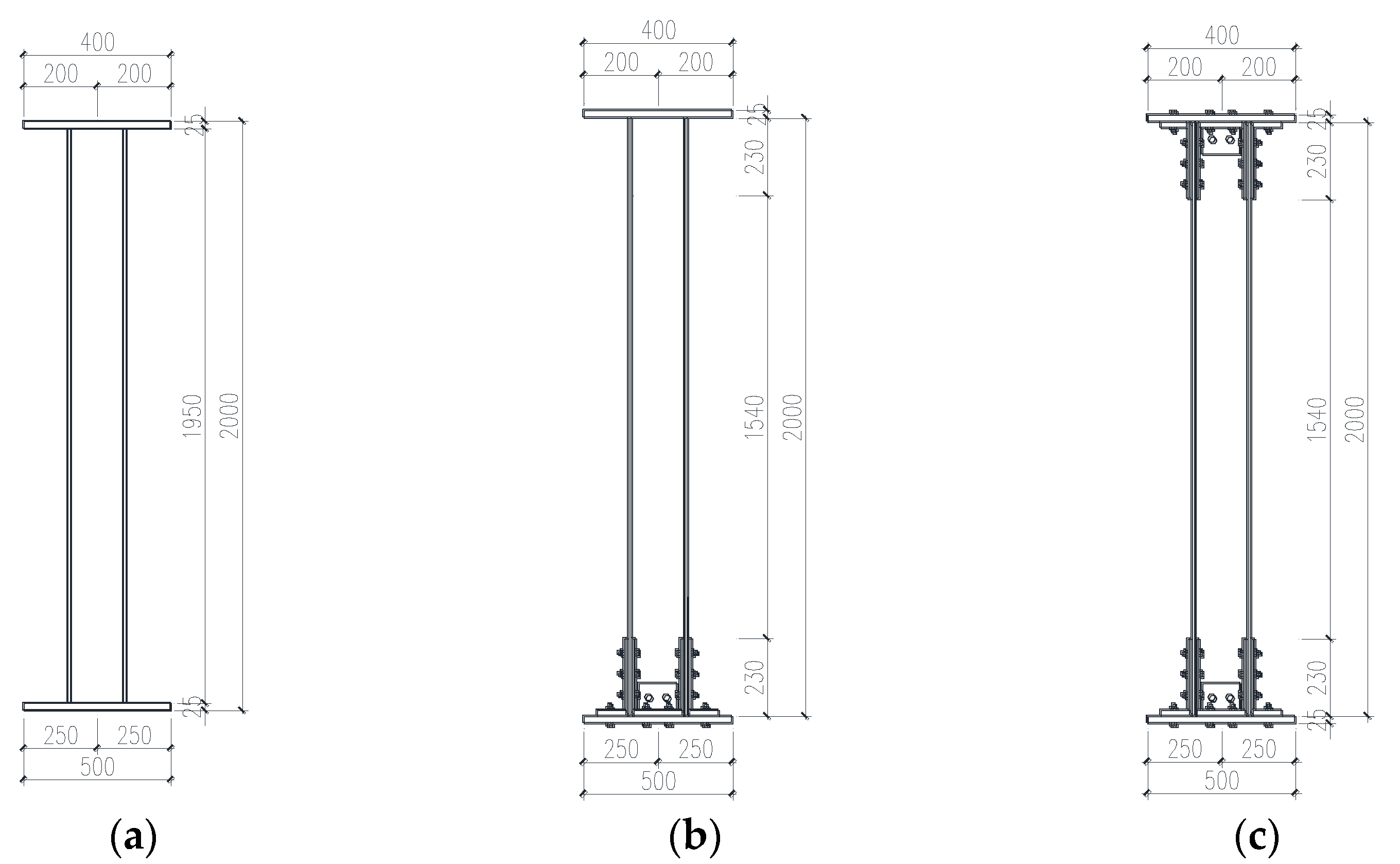
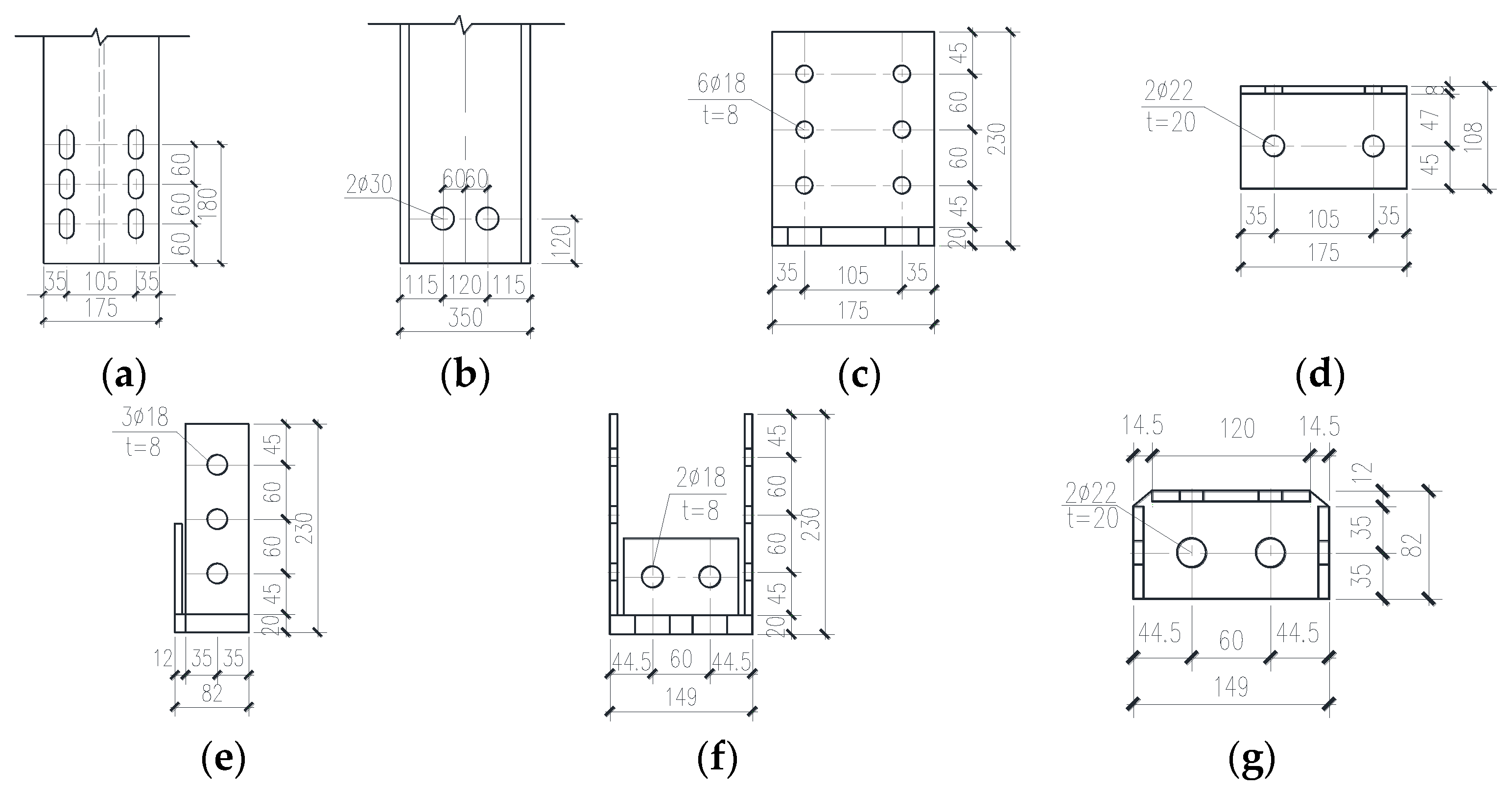

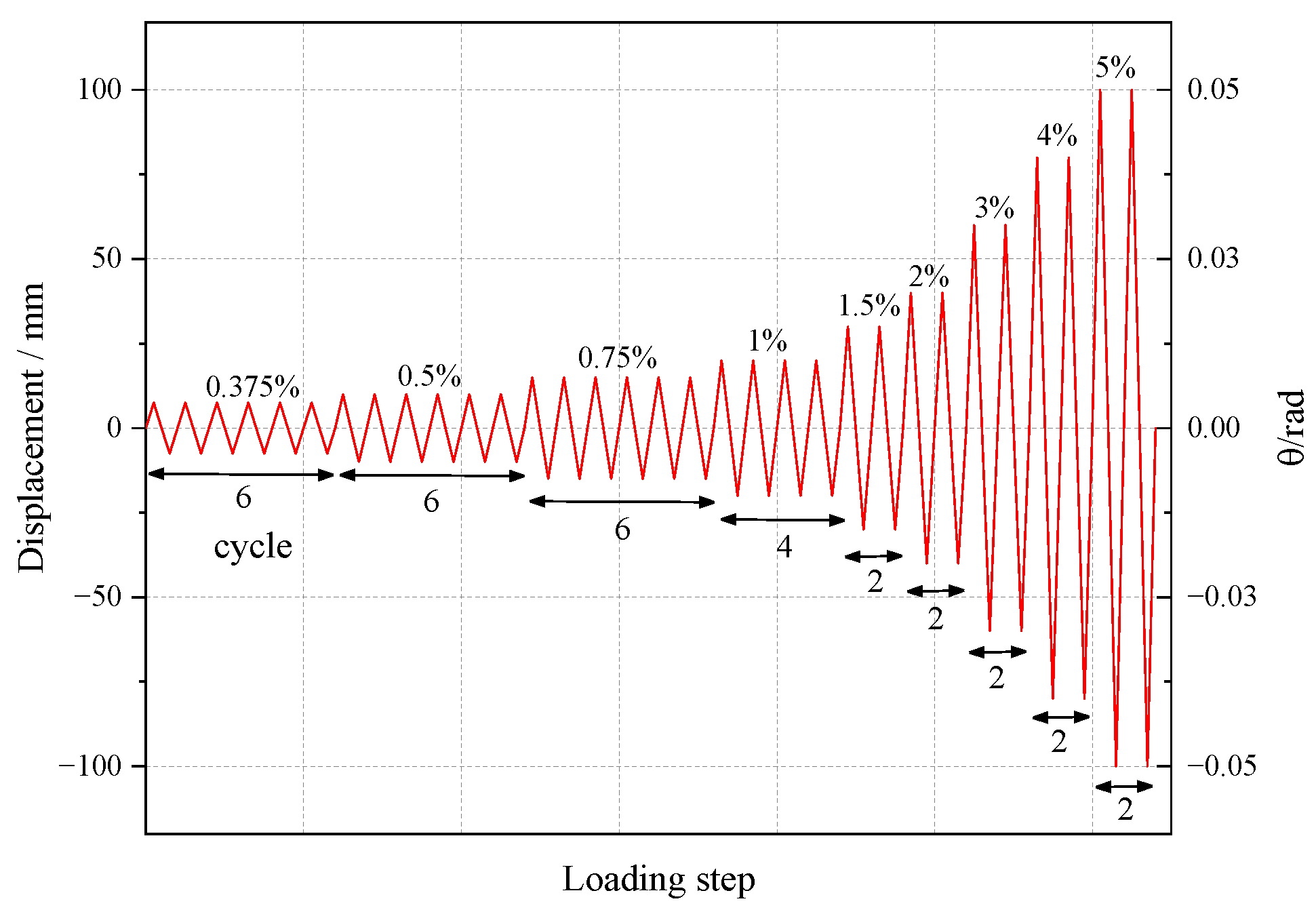
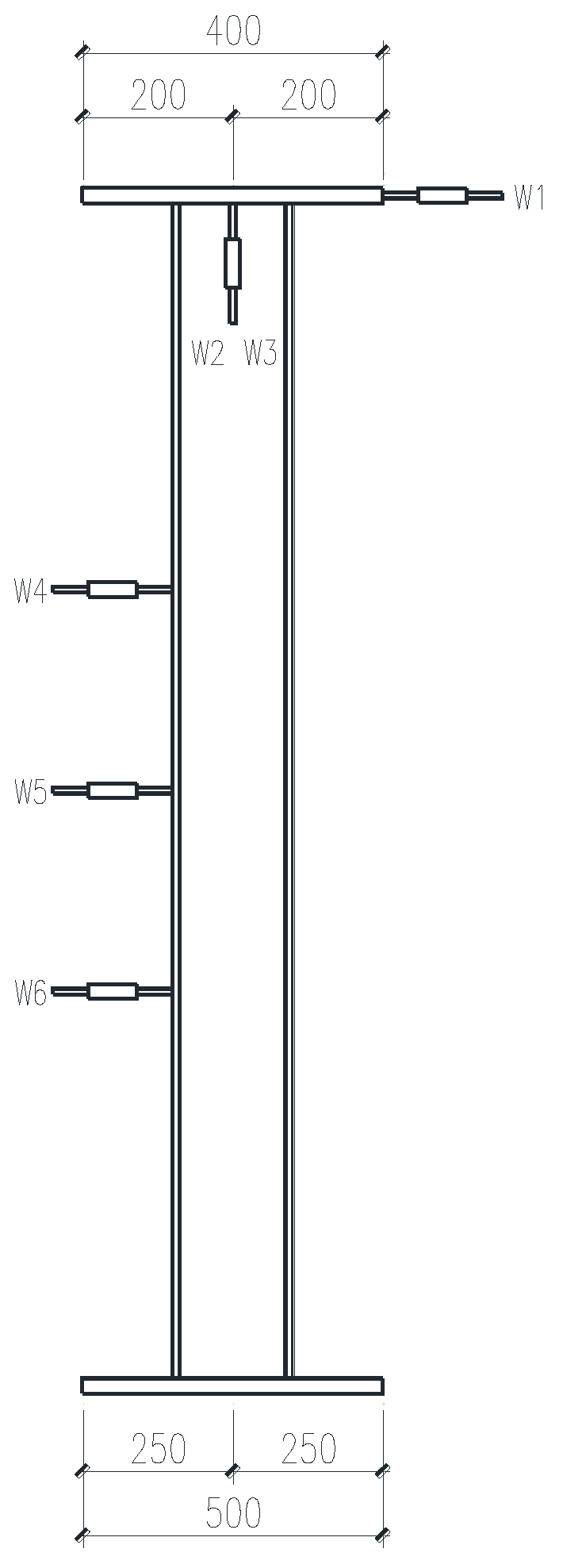
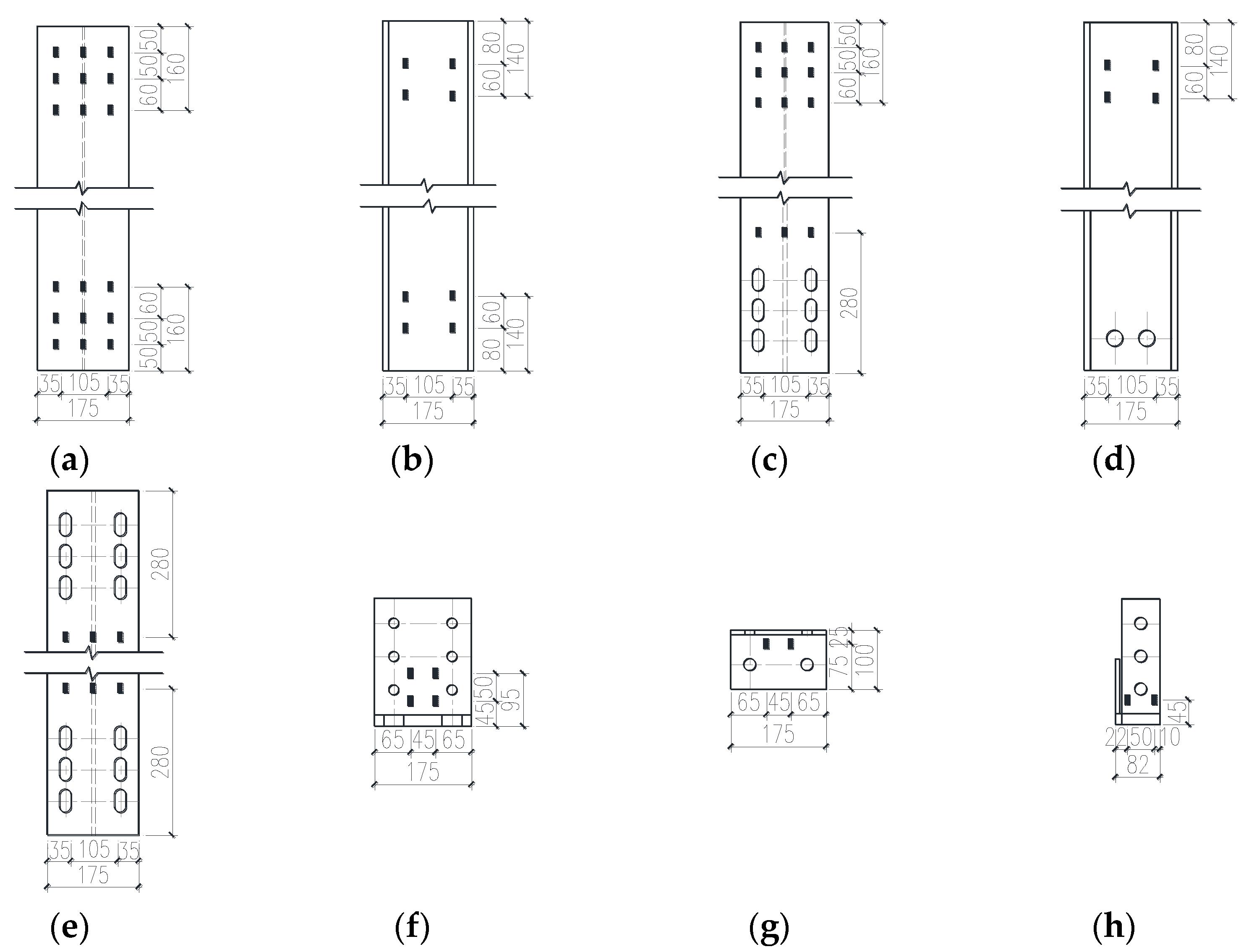
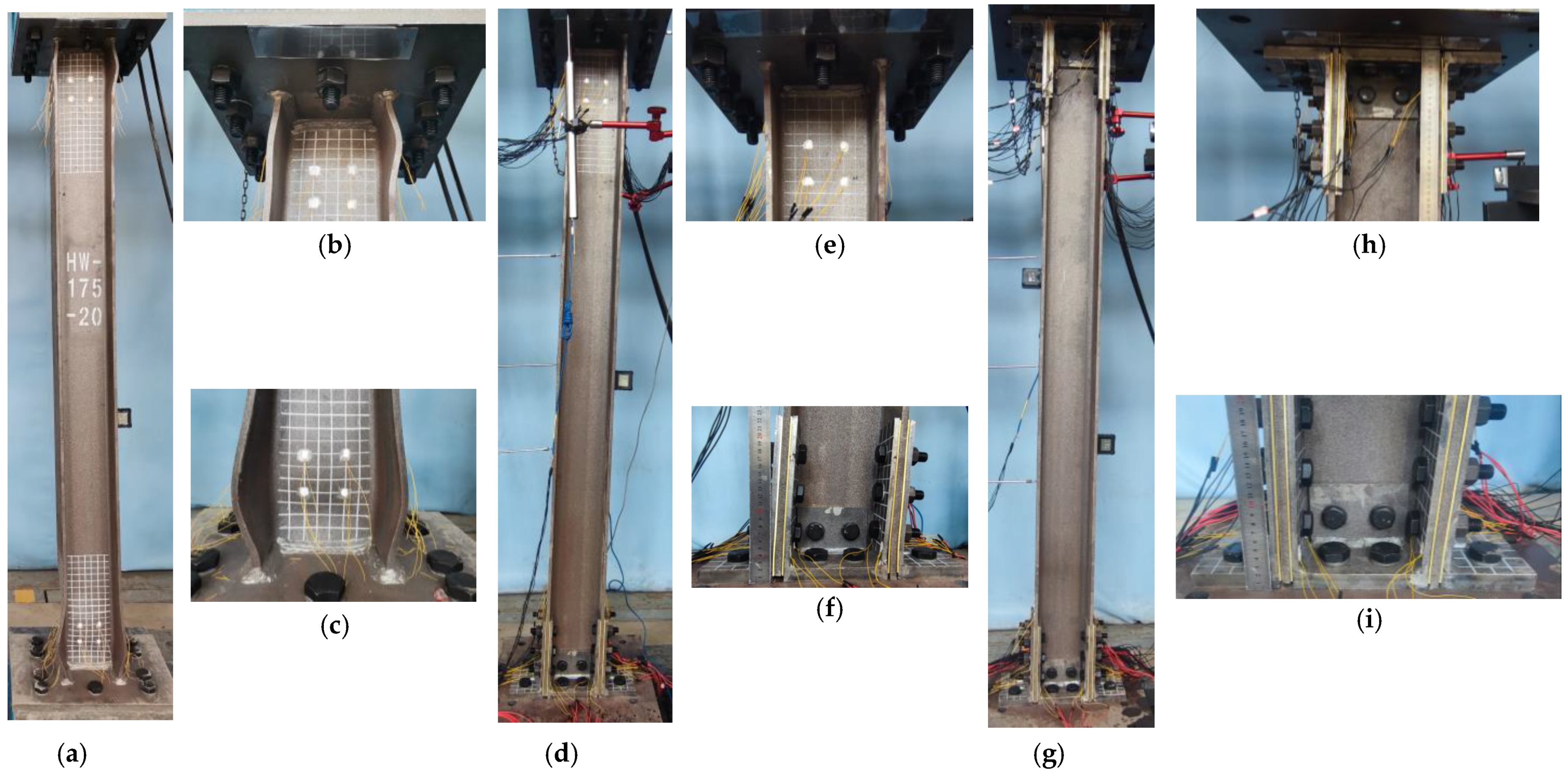



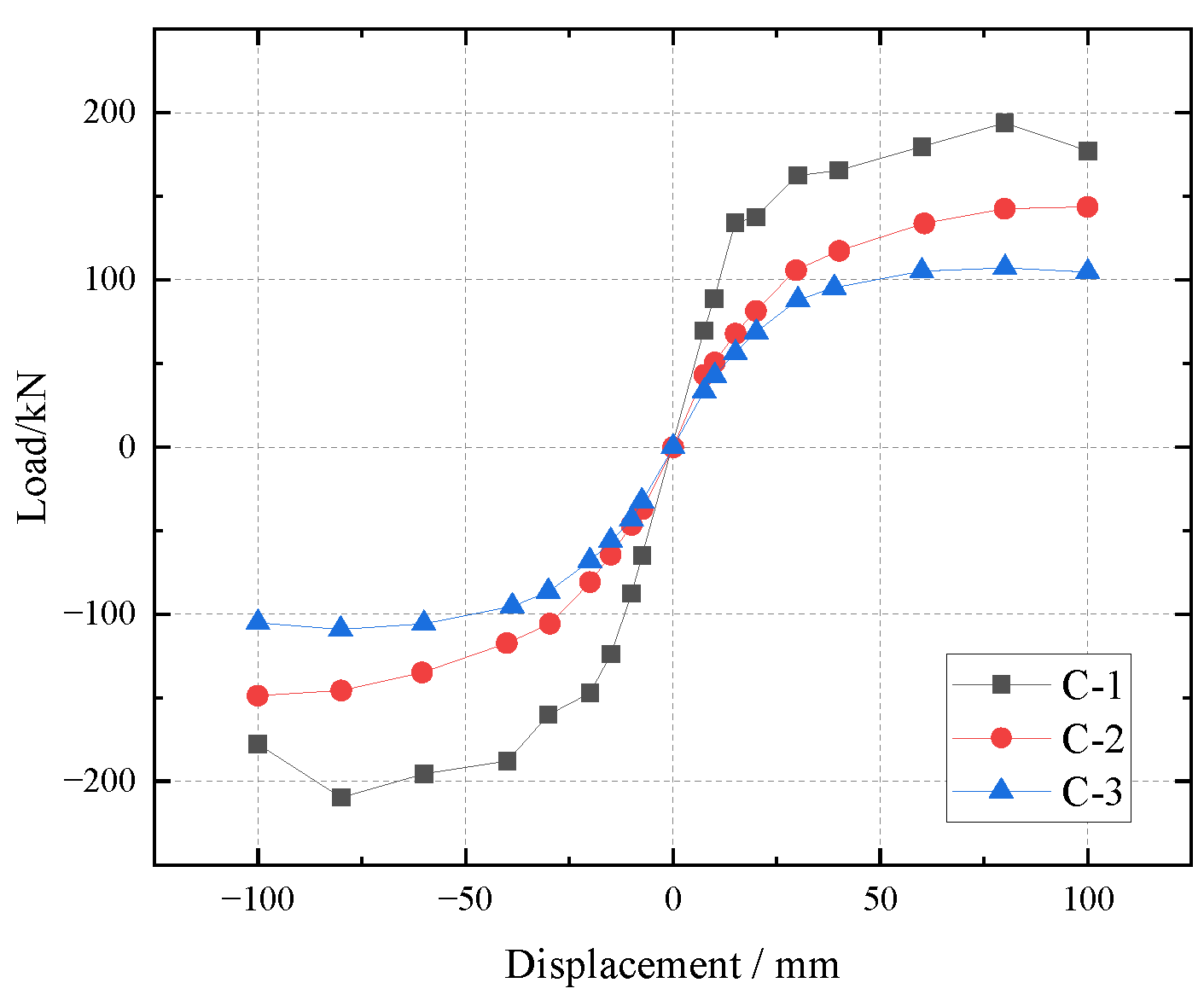
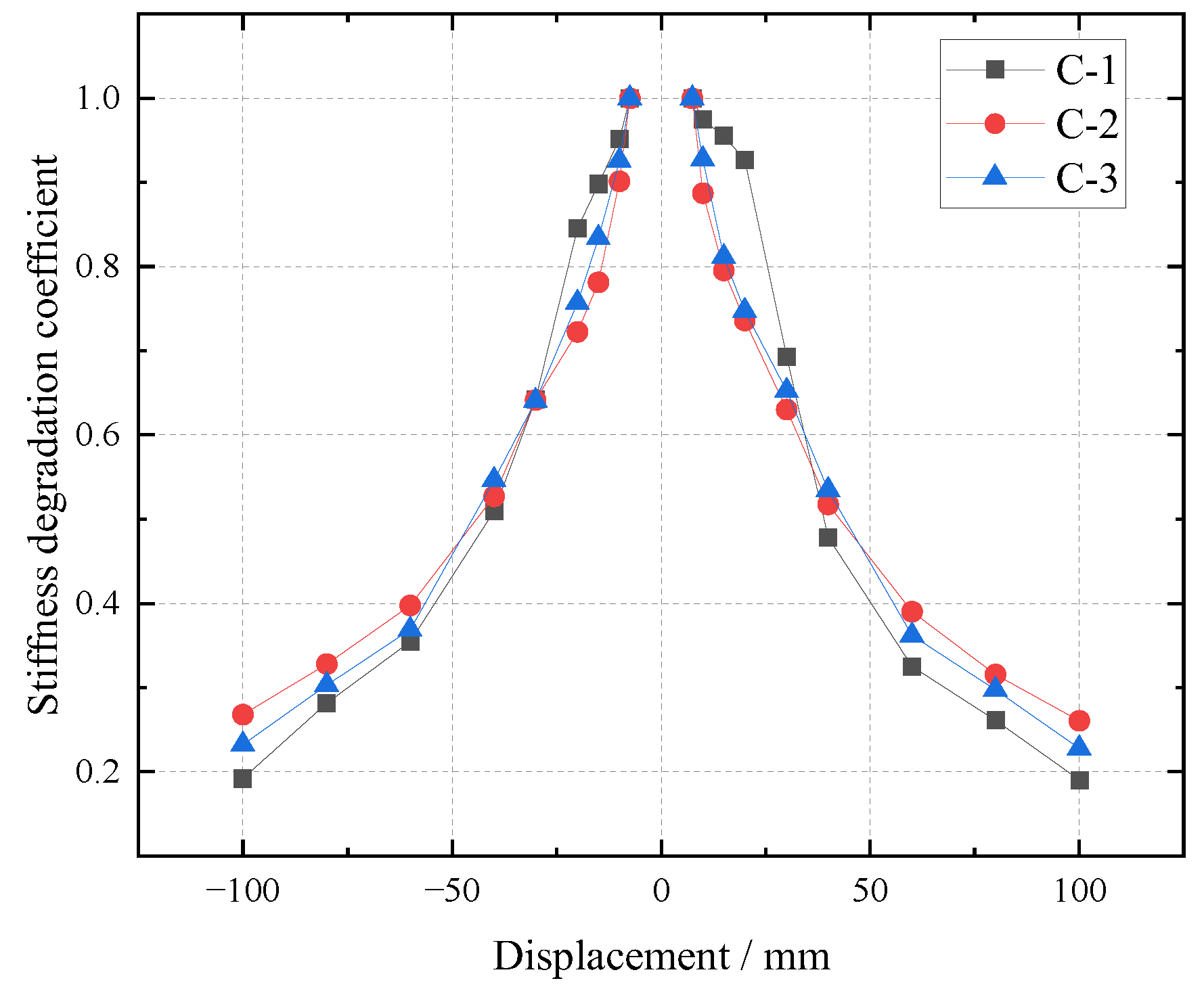
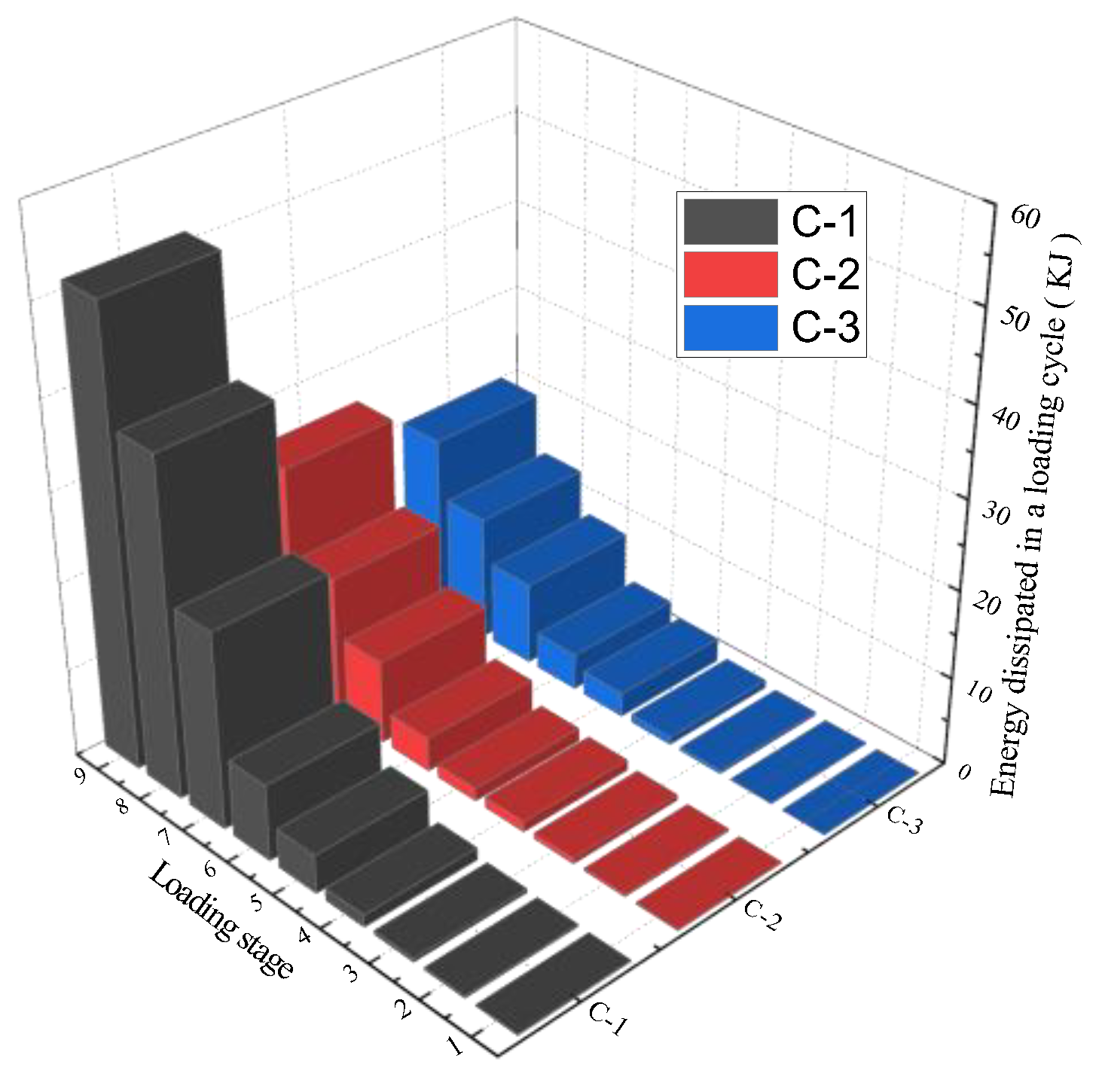





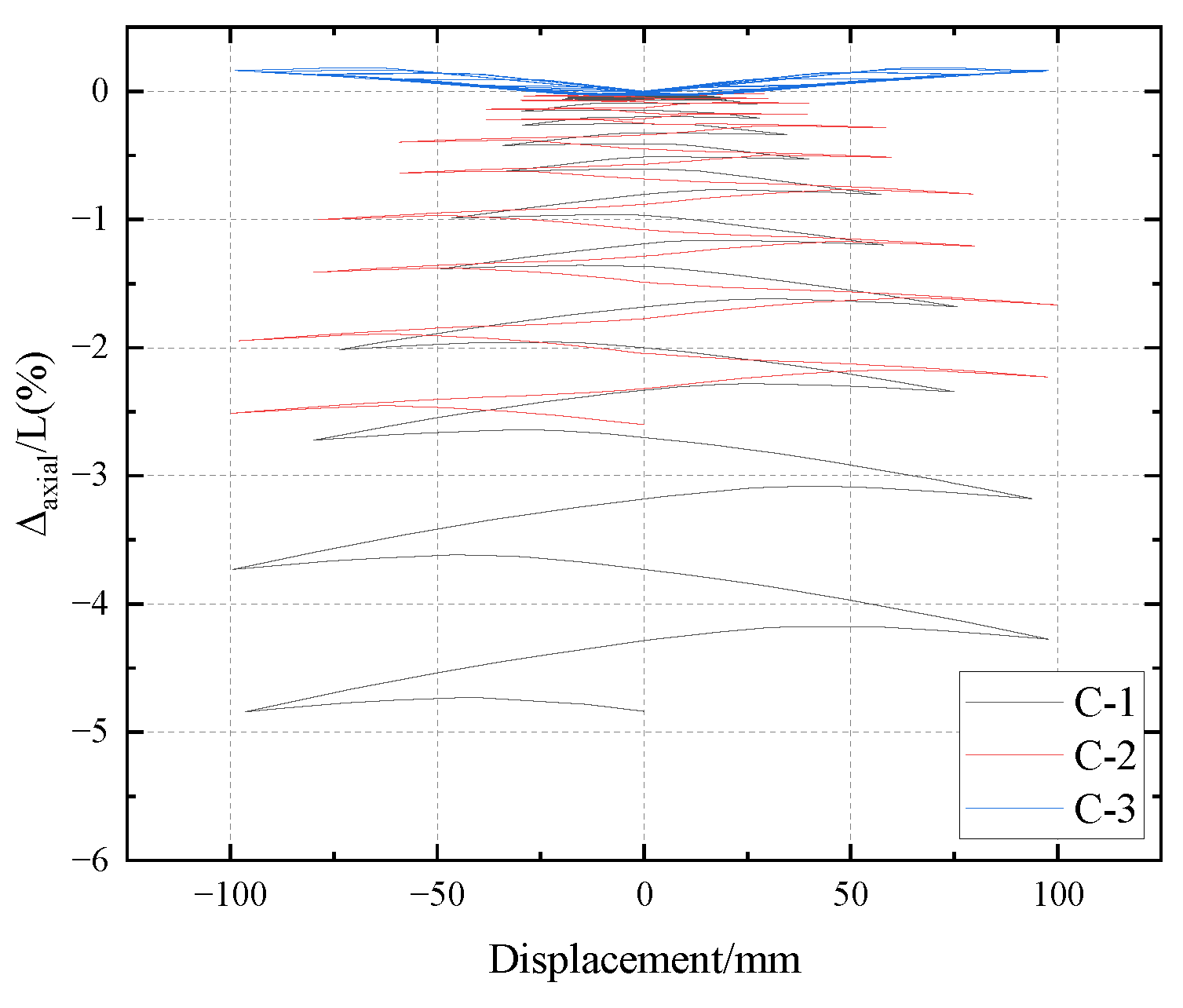


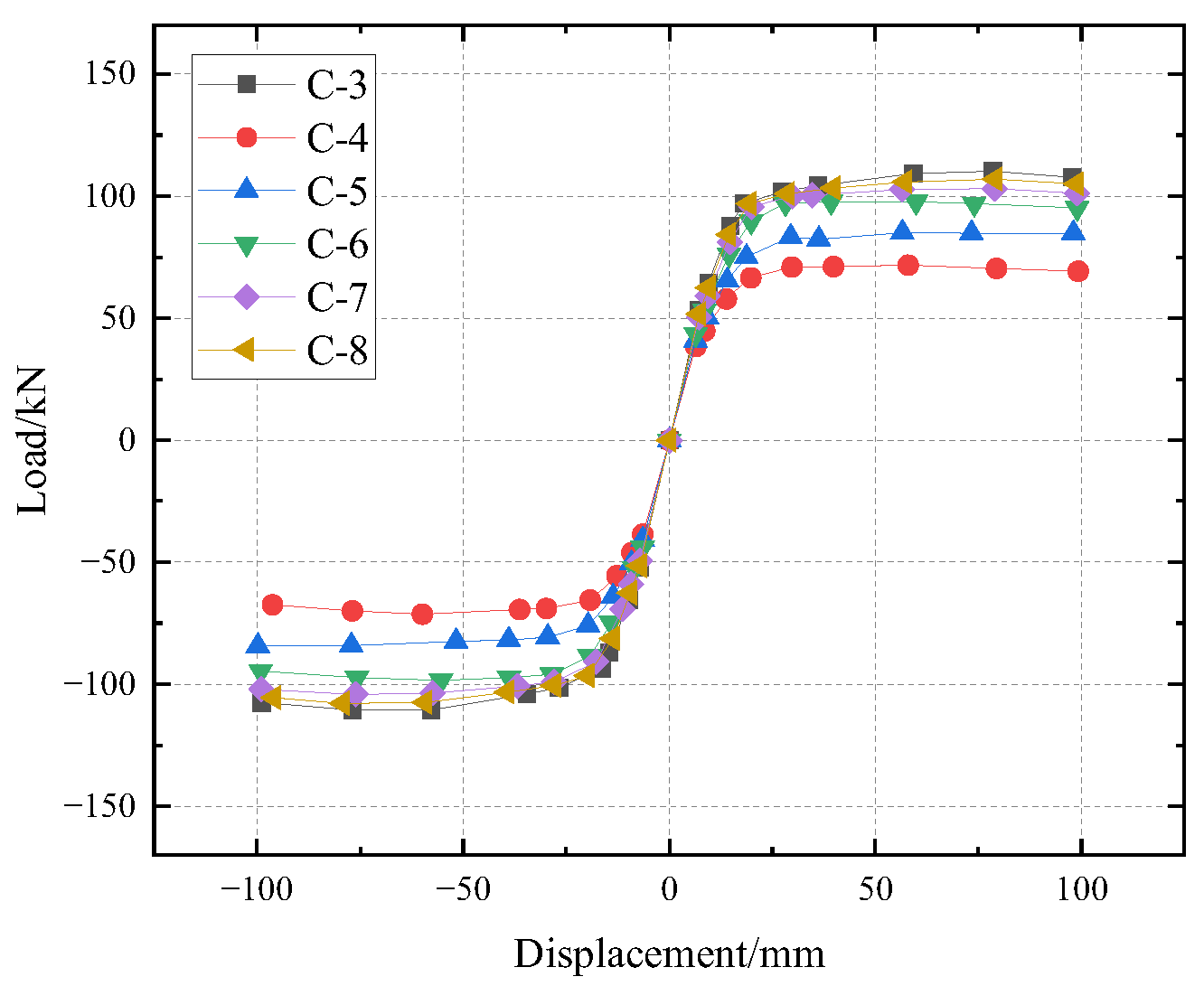
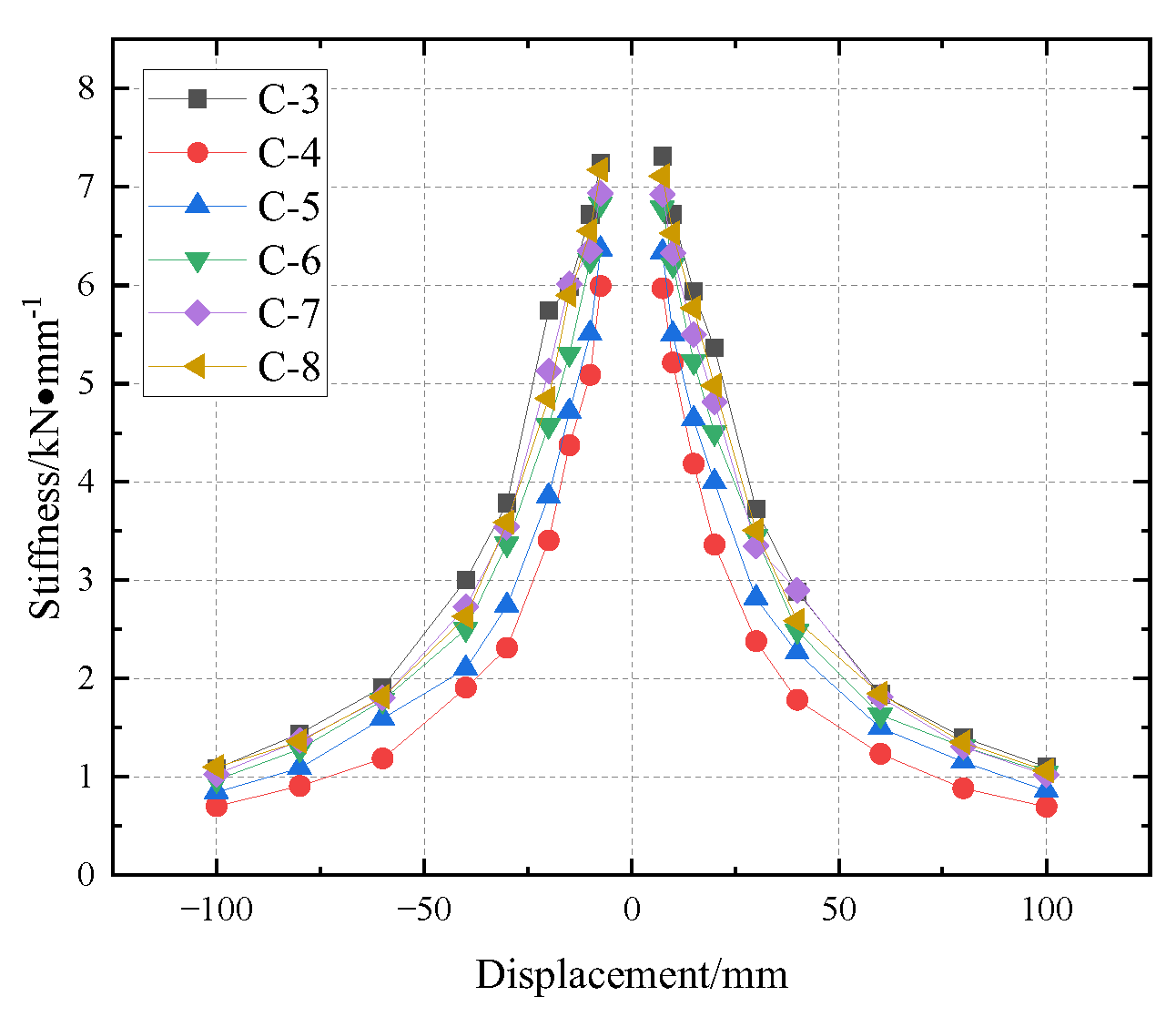
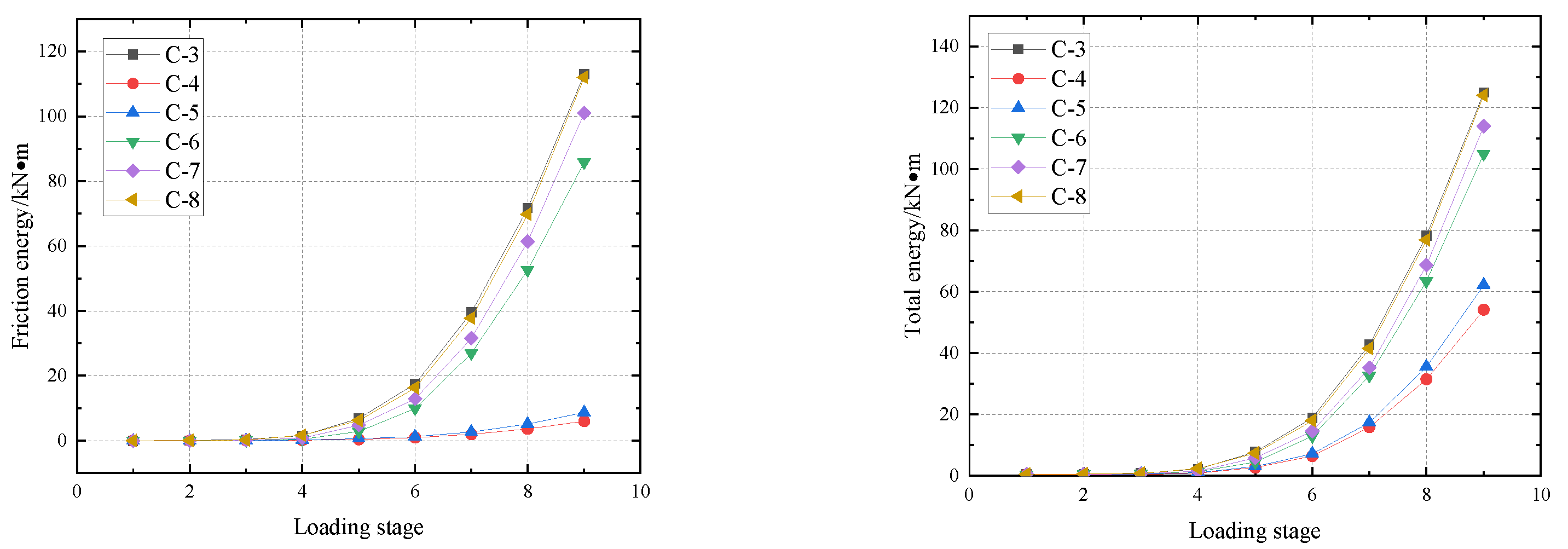
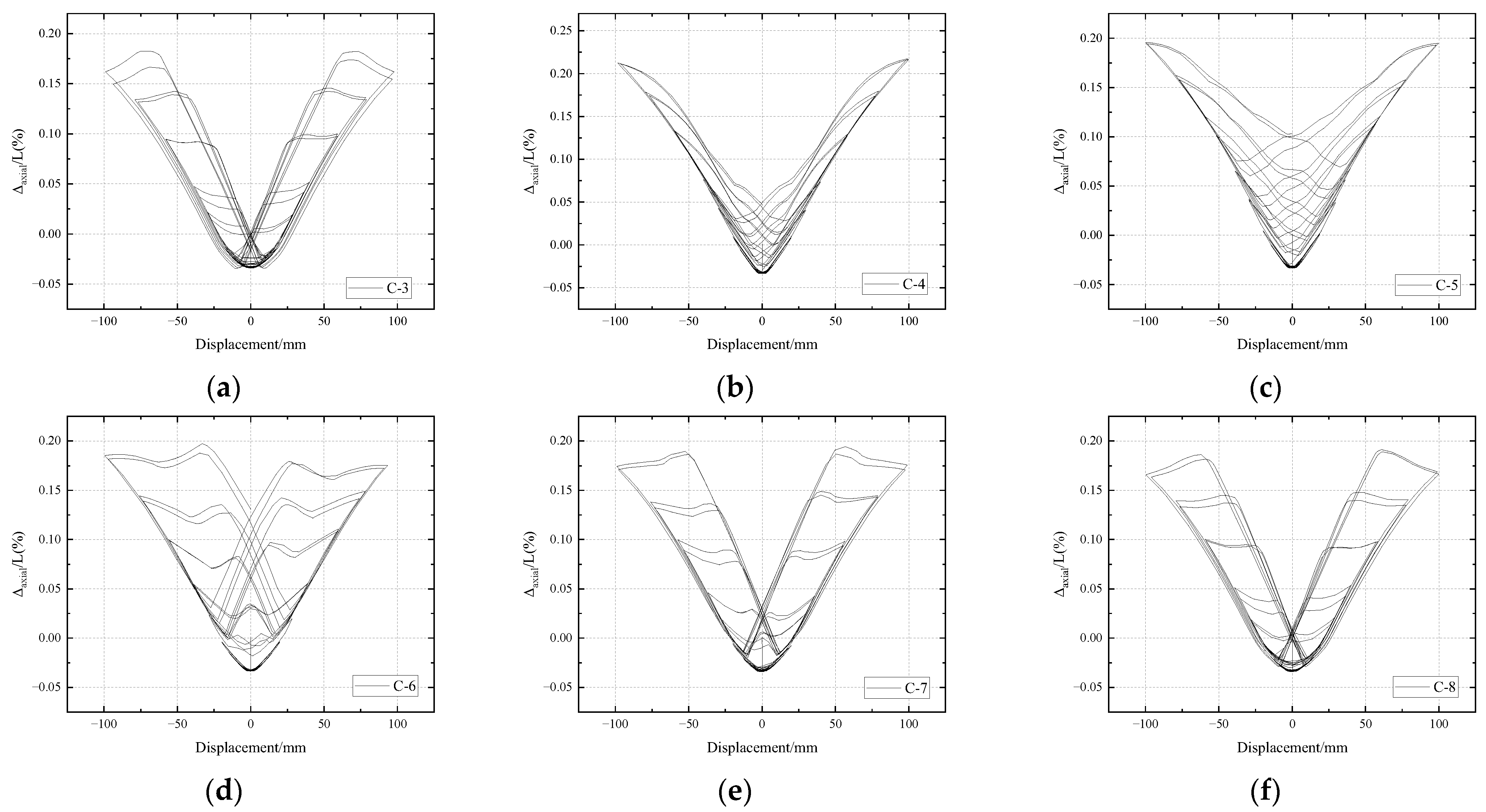
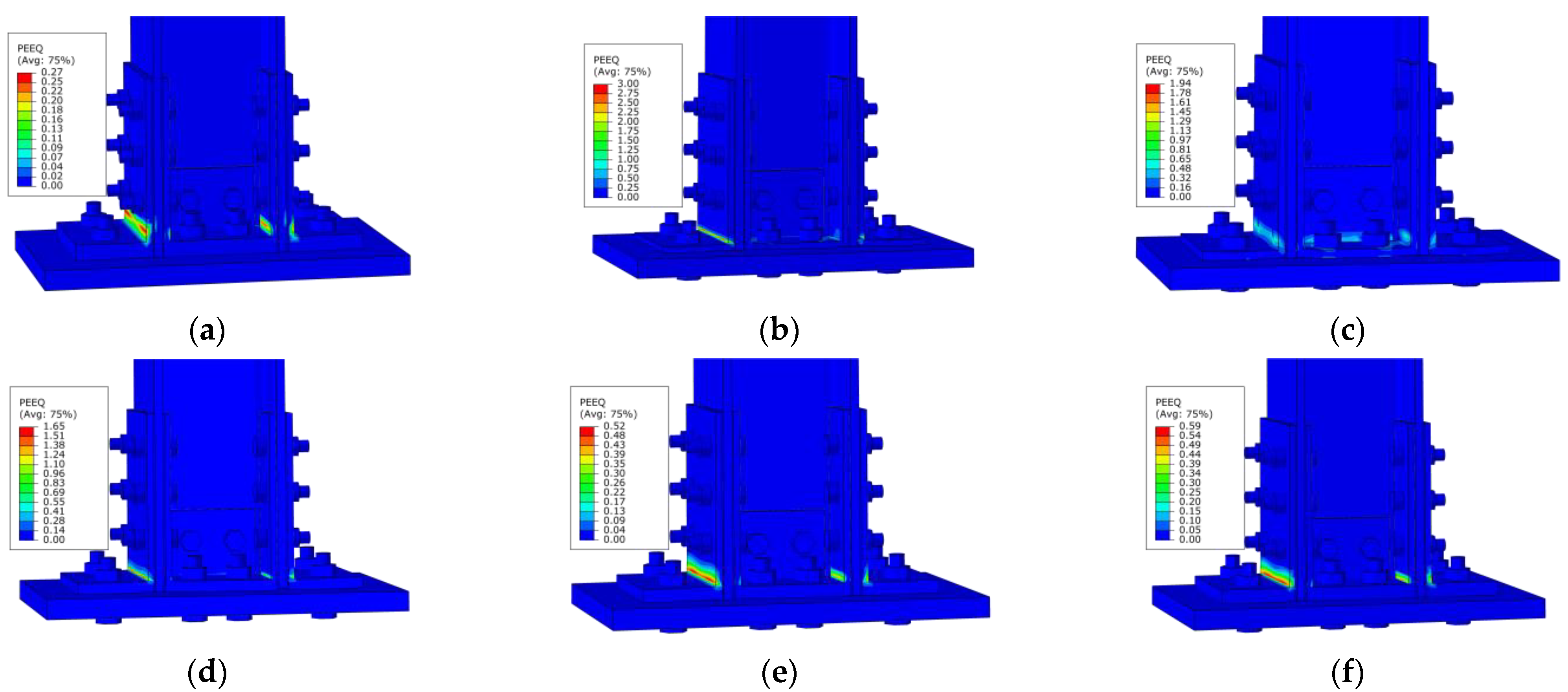
| Sampling Position | Steel Type | fy/MPa | fu/MPa | δ |
|---|---|---|---|---|
| Column flange | Q355B | 398.35 | 591.85 | 27% |
| Column web | Q355B | 435.40 | 606.89 | 25% |
| Connector horizontal leg | Q355B | 404.05 | 480.43 | 24% |
| Connector vertical leg | Q355B | 410.19 | 552.71 | 24% |
| Model | Column Section Size (mm) | Thickness of Horizontal Legs of Connectors (mm) |
|---|---|---|
| C-3 | HW 175 × 175 × 7.5 × 11 | 20 |
| C-4 | 8 | |
| C-5 | 10 | |
| C-6 | 14 | |
| C-7 | 16 | |
| C-8 | 18 |
| Model | Py (kN) | Dy (mm) | Pmax (kN) | Dmax (kN) | Friction Energy Consumption (kN·m) | Total Energy Consumption (kN·m) | Proportion of Friction Energy Consumption (%) |
|---|---|---|---|---|---|---|---|
| C-3 | 97.62 | 19.64 | 110.11 | 78.51 | 113.34 | 125.02 | 90.66% |
| C-4 | 61.61 | 16.42 | 71.62 | 57.93 | 6.01 | 54.24 | 11.14% |
| C-5 | 74.27 | 18.59 | 84.99 | 56.59 | 8.70 | 62.18 | 13.99% |
| C-6 | 86.20 | 18.55 | 97.63 | 59.89 | 85.86 | 104.70 | 82.01% |
| C-7 | 93.32 | 19.10 | 103.13 | 78.91 | 100.94 | 114.25 | 88.35% |
| C-8 | 95.58 | 19.47 | 106.96 | 79.20 | 111.91 | 124.39 | 89.97% |
Publisher’s Note: MDPI stays neutral with regard to jurisdictional claims in published maps and institutional affiliations. |
© 2022 by the authors. Licensee MDPI, Basel, Switzerland. This article is an open access article distributed under the terms and conditions of the Creative Commons Attribution (CC BY) license (https://creativecommons.org/licenses/by/4.0/).
Share and Cite
Li, C.-Y.; Wang, F.; Zhu, A.-Z. Seismic Performance of H-Shaped Steel Column with Replaceable Slip Friction Joints. Buildings 2022, 12, 2240. https://doi.org/10.3390/buildings12122240
Li C-Y, Wang F, Zhu A-Z. Seismic Performance of H-Shaped Steel Column with Replaceable Slip Friction Joints. Buildings. 2022; 12(12):2240. https://doi.org/10.3390/buildings12122240
Chicago/Turabian StyleLi, Cheng-Yu, Fan Wang, and Ai-Zhu Zhu. 2022. "Seismic Performance of H-Shaped Steel Column with Replaceable Slip Friction Joints" Buildings 12, no. 12: 2240. https://doi.org/10.3390/buildings12122240





